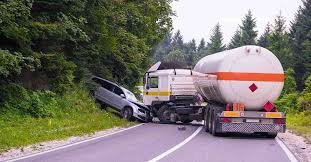The Challenge of Securing Mortgages for Unconventional Homes
Overview
In today’s real estate market, the definition of a “dream home” has evolved. Gone are the days when a traditional single-family home was the only option for homebuyers. Nowadays, unconventional homes such as tiny houses, off-grid dwellings, and converted shipping containers are gaining popularity. These homes offer a unique and often more affordable housing solution for many people. However, for those looking to finance these unconventional homes, the process can be challenging.
Unconventional Homes
Securing a mortgage for an unconventional home presents a different set of obstacles compared to traditional homes. Lenders have strict guidelines for approving loans, and unconventional homes do not always fit within these criteria. As a result, homebuyers looking to purchase an unconventional home may face challenges when it comes to securing financing. In this blog post, we will delve into the reasons behind this challenge and possible solutions for homebuyers.
Challenges
One of the main reasons why securing a mortgage for unconventional homes is difficult is because they don’t have a proven track record. Traditional homes have a long history, and lenders can easily assess their resale value. However, unconventional homes are not as common, and lenders may not be familiar with them. This lack of familiarity makes it challenging for lenders to determine the value of these homes, leading them to view them as high-risk investments. As a result, qualifying for a mortgage can be a daunting task for homebuyers with unconventional properties.
Moreover, unconventional homes are often built with alternative materials or methods, making it challenging for lenders to assess their structural integrity. For instance, tiny houses are typically built on wheels and are not always anchored to the ground, which can be a concern for lenders. Similarly, off-grid homes may use unconventional energy sources, which lenders may not consider reliable. These factors make it challenging for lenders to determine the true value and potential resale value of these homes.
Another hurdle when it comes to securing a mortgage for unconventional homes is their uniqueness. Unlike traditional homes, unconventional homes are not mass-produced or have a standard design. Each home is unique, and lenders may view this as a risk. They may worry that if the home has to be foreclosed on, it will be challenging to sell due to its uniqueness. This could lead to a loss for the lender, making them more hesitant to approve a mortgage for an unconventional property.
Aside from the structural and resale value concerns, lenders are also hesitant to approve mortgages for unconventional homes because of the potential liability risks. Since these homes are often built DIY-style, there is a higher chance for construction errors, which could present liability concerns. For instance, if a tiny house has improper wiring and a fire breaks out, the lender could be held responsible. These potential liability risks add another layer of hesitation for lenders to finance unconventional homes.
While the challenges of securing mortgages for unconventional homes may seem daunting, there are some solutions that homebuyers can explore to overcome these obstacles. The first solution is to have a detailed and professional appraisal done. A thorough appraisal by a qualified professional can help lenders better understand the value and potential resale value of the unconventional property. This can help ease their concerns and increase the likelihood of securing a mortgage.
Another solution is to work with a specialized lender. Many lenders are willing to finance unconventional homes, but they are not always easy to find. Working with a specialized lender who has experience with financing unconventional properties can make the process smoother. These lenders are familiar with the unique challenges and can guide homebuyers through the process of securing a mortgage for an unconventional property.
Another option for homebuyers is to consider alternative financing options such as personal loans or crowdfunding. Personal loans allow homebuyers to receive funds quickly, which can be used to purchase an unconventional property. Crowdfunding is when multiple individuals contribute financially to a project, and it could be a viable option for those looking to finance unconventional homes.
Conclusion
In conclusion, while securing a mortgage for an unconventional home may come with its challenges, it is not impossible. Homebuyers just need to be aware of the potential obstacles and be prepared with the right solutions. Having a detailed appraisal, working with specialized lenders, or exploring alternative financing options can help make the dream of owning an unconventional home a reality. With the growing demand for unique and affordable housing options, it is likely that the mortgage industry will adapt and become more accommodating to unconventional homes in the future.









